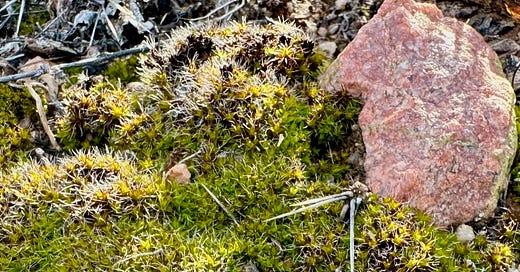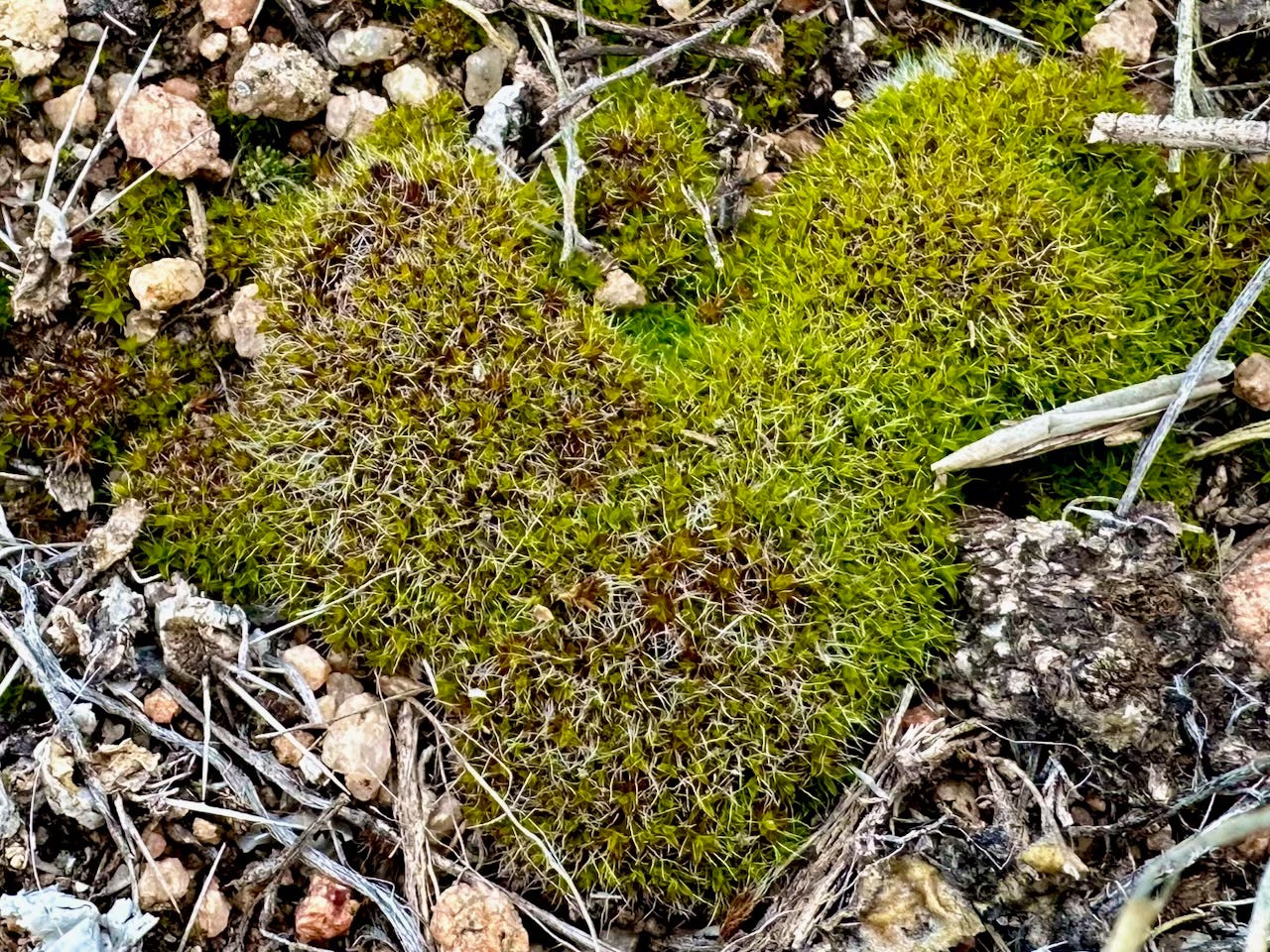Hello Friends! Welcome to Practicing Terraphilia in a Year of Spiritual Thinking, a journey of searching for the spiritual basis of our terraphilia, humans’ innate affiliation for this living earth and those with whom we share the planet, animal, vegetable and mineral.
Imbolc
This week, I am exploring Imbolc, the “cross-quarter” holiday of Celtic origin, midway between Winter Solstice and Spring Equinox. In today’s Gregorian calendar, the season of spring begins with the Equinox. In pre-Christian nature spirituality, the seasons were aligned to the solar calendar, and Imbolc (pronounced with emphasis on the first syllable, IM-blk) was associated with the Northern Hemisphere’s rebirth in spring.
The word’s origin isn’t clear, but in modern Irish, the closest phrase means “in the belly,” probably a reference to lambing season, which in its explosion of new life in the form of tiny, bleating lambs, certainly carries the promise of spring.
(Not that the weather always agrees: In my experience of lambing season in northwest Wyoming, which happens at this time of year, the ewes always dropped their lambs in a blizzard, usually in the middle of the night.)
Imbolc is one of the four main seasonal turning points or festivals of the Celtic year, including Beltane (now called May Day), Lughnasadh (August 1st), and Samhain on November 1st (now All Saints Day or Day of the Dead). Before Christianity, these festivals anchored the Celts to the cycle of the year and the seasons.
Imbolc was the festival of renewal, the promise of new life to come, no matter the temporal phenomenon of the weather at the beginning of February.
Since the Celts were a nature people, the world of nature was both a presence and a companion. Nature nourished them; it was here that they felt their deepest belonging and affinity. —John O’Donohue, Anam Cara: A Book of Celtic Wisdom
Celebrating Imbolc
The ancient Celts were a culture of oral traditions, which means that little of their nature-centric rituals and celebrations is accessible today. With the coming of Christianity, Imbolc was subsumed in Christian holidays—in Ireland it is now St. Brigid’s Day, a national holiday focused on Ireland’s patron saint.
Yesterday evening, on Imbolc by the solar calendar, I walked through the high prairie of my neighborhood. And pondered how I might observe Imbolc and honor the first hints of spring and renewal. Here at 6,700 feet elevation, winter isn’t exactly yielding yet. A snowstorm was blasting the mountains (our ski area picked up 27 inches of snow in the past 48 hours!), and down in the prairie draws, the wind blew in 30-mph waves.
Hunched in my winter coat, a scarf wrapped around my chin, a cap snugged over my head, I thought: spring is a long way off. And then I spotted bright green clumps of moss on the soil in the shade of a spiny cholla cactus. I chuckled, thanked the universe, and bent down to admire those heralds of renewal.
Hunched in my winter coat, a scarf wrapped around my chin, a cap snugged over my head, I thought: spring is a long way off. And then I spotted bright green clumps of moss on the soil in the shade of a spiny cholla cactus.
It was only when I knelt on the damp soil and took off my gloves to take a photo with my phone that I realized one moss clump was nearly heart-shaped. I laughed out loud. Oh, the universe has a sense of humor indeed!
I creaked my way upright again, brushed bits of soil off the damp knees of my jeans, pulled my gloves over frozen hands, and walked on into the wind, smiling with delight at the bit of green in a winter-gray world.
That moss inspired one part of what will be my personal Imbolc celebration: no matter the weather, I will walk out into the nearby wild in search of signs of spring and renewal.
And perhaps I will write a story of that persistent and resilient moss, weaving science and wonder, left-brain observation and data enchanted by right-brained creativity, as my own contribution to Celtic-inspired Imbolc myth.
Myths and folk tales can weave us back into the seasons and cycles of the year, and they can help us to accept the necessary, sometimes challenging, cycles of life. That sense of awe, of connection, of belonging to a mysterious world which has many depths and layers to explore, is what is missing in so many people’s lives today. It is what we need to cultivate in ourselves, encourage in our children, and offer up generously to others.
—Sharon Blackie, “How Myth and Story Can Help Us Belong to Places” [
How would you celebrate Imbolc? What story would you write to mark this turning point where winter begins to show the first glimmers of life’s renewal? Hit the comment button below and share!
A Prayer for Peace
I rarely write about politics, but this is about humanity and the impact of war. Specifically, of war on the Gaza Strip, the narrow roughly rectangular swath of desert between the Mediterranean Sea and Israel, just north of the border with Egypt.
Before the war, over two million Palestinians called Gaza home, albeit a difficult one, where jobs were scarce and travel into Israel for work or food and other supplies was severely limited. Since October 6th, bombings and tank warfare have killed at least 26,000 people—twenty-six thousand. Food, water, medicine, and fuel are scarce. And whole cities and towns have been bombed into dust.
I do not support the Hamas terrorists and their horrific actions. I do not believe violence is ever appropriate, no matter the situation.
I cannot look away from this war. Killing thousands of innocent people—whole families, whole neighborhoods—and destroying homes, schools, businesses and hospitals; refusing to admit aid for millions of people who are now displaced and on the brink of starvation is inhumane. Literally. This is not how humans behave. It hurts all of us and destabilizes our world. It must stop.
I offer this prayer that the killing and bombing cease, that the Israeli hostages be returned, that food and water and medicine flow into Gaza. That power returns, that plans for rebuilding take shape. That humanity and decency return to the region.
May the spirit of Imbolc, this time of the first glimmerings of spring and renewal, take root in Gaza and across the whole Mideast.
You may not agree with me, and that’s fine. I am not offering this prayer to begin a debate or argument. I am simply expressing my own personal views.
If you feel moved to action, the American Friends Service Committee, a Quaker foreign-service organization, offers a helpful list of suggestions on support for Gaza, including resources to read.
What’s ahead: Next week, a look at my work of reading landscapes as a prayer of love and gratitude for this earth and we who share the planet. (I planned that for this week and then remembered Imbolc.)
Blessings to all and may peace spread around this Earth!






I look forward to more Celtic posts. There was a brief time period when a Celtic form of Christianity flourished and paid more attention to nature. We lost so much when the Roman Church forced it out of existence. There are a few people working to recover this connection, like J. Philip Newell from the Ioan Community. Religion started imbedded in nature and needs to return.
Amen, Susan. Thank you for this, there's always such a wealth of information in your writing. I sometimes feel as though moss is vibrating, it's the most inviting thing, so wonderful to see a heart moss!